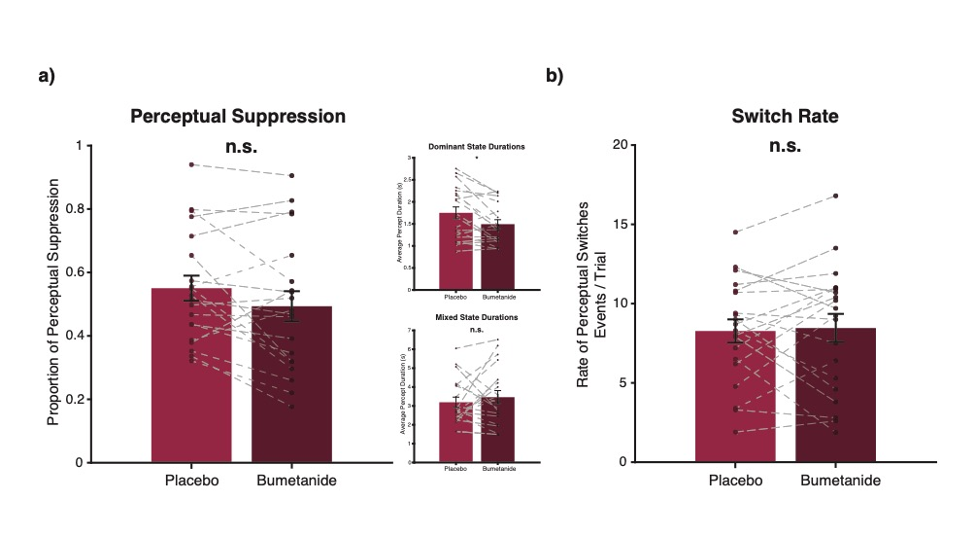




Did you find this useful? Give us your feedback








5 citations
285 citations
...Third, although bumetanide demonstrates high specificity as an NKCC1 antagonist [20], NKCC1 is differentially expressed throughout the cortex during development [49, 50], and becomes increasingly present in the PNS throughout maturation [51]....
[...]
281 citations
...Given recent links between GABAergic inhibition and rivalry dynamics [11, 31], and the replicated differences in binocular rivalry dynamics observed in individuals with autism [11, 33–35], rivalry has been suggested as a noninvasive perceptual marker of inhibitory signaling in visual cortex, and its putative disturbance in autism [11, 35]....
[...]
...Empirical data using magnetic resonance spectroscopy (MRS) lend further support to these claims: across individuals, the concentration of the neurotransmitters GABA and glutamate(+glutamine) in early visual cortex strongly predict the degree of perceptual suppression [11] and longer dominant percept durations [32, 42] during rivalry....
[...]
...In particular, studies in both humans and in animal models suggest that altered inhibitory signaling, mediated by the neurotransmitter GABA, may characterize the condition [10, 11]....
[...]
...This finding is consistent with previous binocular rivalry studies which illustrate high test-retest reliability of rivalry dynamics within individuals [11, 31, 41]....
[...]
...Prior pharmacological studies in humans reveal a causal link between rivalry dynamics and GABAergic inhibition using both GABAA and GABAB modulators [31, 32], as well as a dependence of rivalry dynamics on tonic levels of GABA in visual cortex [11, 32]....
[...]
271 citations
266 citations
...In particular, studies in both humans and in animal models suggest that altered inhibitory signaling, mediated by the neurotransmitter GABA, may characterize the condition [10, 11]....
[...]
...Multiple lines of evidence implicate disrupted E/I balance in the neurobiology of Autism Spectrum Conditions (ASC; autism henceforth) [6–12]....
[...]
260 citations
...Specifically, longitudinal bumetanide administration has been observed to improve social domain scores measured by the Child Autism Rating Scale (CARS) [21, 23, 43]....
[...]
...Further, some studies of bumetanide in humans, specifically children with autism, have shown evidence for attenuation of social symptom severity and improvement of emotion recognition [21–23], although, notably, these benefits are not universally observed [24]....
[...]